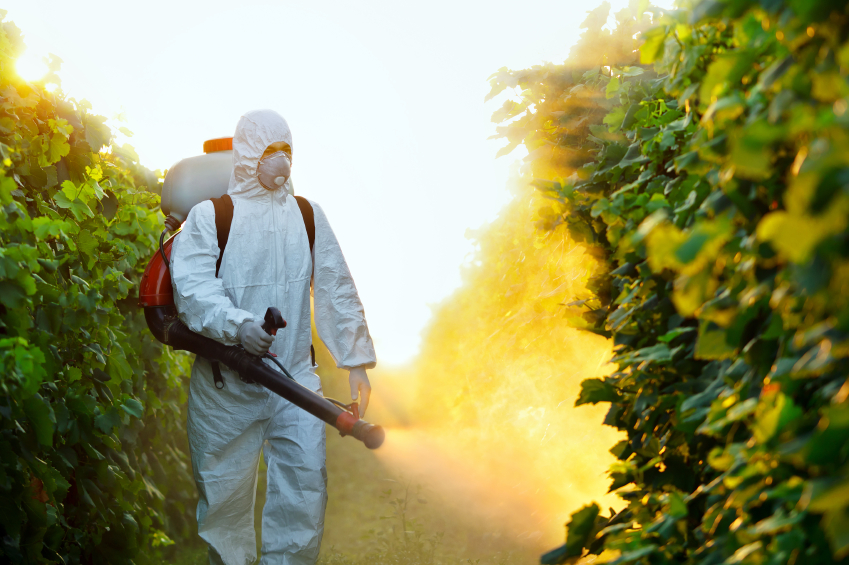
|
The final rule amending the WPS was effective January 1, 2016. Agricultural employers and handlers will be required to comply with most of the new requirements by January 2, 2017, but compliance with other components is not required until January 1, 2018, or later. Before we look at some of the new requirements and compliance dates, let’s take a look at the reality of who is actually affected by the changes to the WPS.
Note: The “or later” is applicable to the new training requirements for agricultural workers and pesticide handlers. The EPA is developing training materials. Compliance with the new training requirements is required 180 days after the notice of availability of the training materials in the Federal Register but no earlier than January 1, 2018. Meaning, the compliance deadline could be later than January 1, 2018, if the EPA does not make the training materials available by July 1, 2017.
Who’s Affected?
Well, it’s a standard to protect farmworkers, so farms are affected. Certainly true, but the impact of the WPS amendments go far beyond the farm fields. Those affected include not only owners, field supervisors, and workers who grow fruits and vegetables on farms, but also:
- Pesticide applicators and pesticide trainers
- Owners/employers on agricultural establishments that grow and harvest for commercial production:
- Timber and trees in forests and nurseries
- Plants in greenhouses and nurseries
- Employers of researchers who help grow and harvest plants
- Employers at commercial pesticide-handling establishments
Minimum Age
Pesticide handlers and early entry workers (i.e., workers who enter a treated area after a pesticide application is completed but before a restricted entry interval (REI) for the pesticide has expired) must be at least 18 years old. One piece of good news here for industry is the exemption for immediate family members. The definition of “immediate family” has been extended to also include all in-laws, grandparents, grandchildren, aunts, uncles, nieces, nephews, and first cousins.
Compliance deadline: January 2, 2017.
Hazard Communication
Pesticide application information and safety data sheets (SDSs) must be displayed at a central location within 24 hours of the end of the application and before workers enter the treated area. Both must be displayed for 30 days after the REI expires and be maintained for 2 years after the end of the REI. The application information and the SDSs must be made available upon request to workers, designated representatives, and medical personnel.
Compliance deadline: January 2, 2017.
Notification of Treated Areas
Employers must post a warning sign if the REI of a treated area is greater than 48 hours for an outdoor application or greater than 4 hours for an enclosed space application, such as a greenhouse. Other than these two requirements, employers may opt for posting or oral notification unless the pesticide label requires both.
In addition, pesticide handler employers must provide notification before the application begins in some cases and within 2 hours of the end of the application in most cases. The exception is when the only change is less than 1 hour difference in application time.
Compliance deadline: January 2, 2017.
Entry Restrictions
For all outdoor production, no entry is allowed into a treated area of the application exclusion zone (AEZ). The AEZ is an area up to 100 feet around the application equipment during pesticide applications on farms, forests, and nurseries. The size of the AEZ depends on the type of application. The amended WPS includes revised descriptions of application methods.
Compliance deadline: January 2, 2017.
Application Suspensions
Pesticide applicators must suspend applications if a worker or anyone else, other than trained and equipped handlers, is in the AEZ.
Compliance deadline: January 1, 2018.
Pesticide Safety Information
Pesticide safety information must be displayed at a central location and at sites where decontamination supplies are located if the decontamination supplies are at a permanent site or at a site with 11 or more workers or handlers.
Information can be displayed in any format—posters will no longer be required. However, the content of the pesticide safety information has been expanded to include instructions to seek medical attention as soon as possible in certain circumstances and the contact information of the pesticide regulatory authority.
Compliance deadline: January 1, 2018.
Personal Protective Equipment
Requirements for personal protective equipment (PPE) concerning respirators have been expanded for handlers to include fit testing, training, and medical evaluation, regardless of label requirements, although the respirator specified by the label must be worn. Records concerning the completion of the fit test, training, and medical evaluation must be kept for 2 years.
Exceptions to the labeling-specified PPE for handlers when using closed systems is still allowed. However, the closed system must meet a performance-based standard and basic operating standards. Written operating instructions and training must be provided for the handlers.
Compliance deadline: January 2, 2017.
Decontamination Supplies
Employers must provide 1 gallon of water for each worker and 3 gallons for each handler and early entry worker for routine washing and decontamination. The water must be measured from the beginning of the work period. Workers and handlers must be trained to use any nearest clean water source in case of an emergency.
The requirement to provide enough water for emergency eye flushing for handlers has been expanded to specify amounts. Employers must provide pesticide handlers with a system capable of delivering 0.4 gallons per minute for 15 minutes or 6 gallons of water able to flow gently for about 15 minute if handlers use products requiring eye protection or use a pressurized closed system.
Compliance deadline: January 2, 2017.
Tomorrow we will review the new training requirements for workers and handlers—what some people in the ag industry are saying is the hardest part of complying with the amended pesticide WPS.
